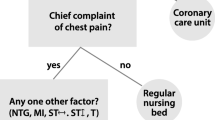Abstract
Managing and communicating risks have become crucial tasks in today's economy and society. Visualization – through its numerous cognitive and communicative advantages – can play an important role in assessing and conveying risks. This article, thus, examines how (interactive) graphic representations, such as maps, charts, diagrams and visual metaphors, can be applied to risk management by reviewing current approaches and by providing a conceptual framework that is illustrated with several application examples. The article also provides a concise set of guidelines that can be used when visualizing risk to avoid the dangers inherent in graphic representations (such as distortion or manipulation), and concludes with an outlook on future developments in this field. The article's main implication for practice is to understand visualization, not as a static rendering of risk assessments or aggregations but as an important catalyst, for better risk communication to multiple stakeholders along the entire risk management cycle.





Similar content being viewed by others
Notes
A general defi nition of risk communication is given by the US National Research Council (cited in Koskosas, 2008): ‘Risk communication is an interactive process of exchange of information and opinion among individuals, groups and institutions. It involves multiple messages about the nature of risk and other messages, not strictly about risk that express concerns, opinions or reactions to risk messages or to legal and institutional arrangements for risk management.’
On the importance of (high quality) graphics for effective risk communication see also Hance et al (1990), p. 83.
On the importance of having a risk management framework see also the comprehensive review of Canadian Best Practices in Risk Management at http://www.tbs-sct.gc.ca/pubs_pol/dcgpubs/RiskManagement/rm-rcbp1_e.asp.
Complementing the residual risk ratings regarding likelihood and impact with target positions (where do we want to have the risk rated in the future?) enables decision makers to get an overview on the relative importance of the risks and their improvement potential.
For further guidelines and interactive overviews on visualization methods, see: www.visual-literacy.org.
References
Blackwell, A., Phaal, R., Eppler, M. and Crilly, N. (2008) Strategy Roadmaps: New Forms, New Practices. Proceedings of Diagrams 2008, Fifth International Conference on the Theory and Application of Diagrams; 19–21 September, Munich, Germany.
Bresciani, S. and Eppler, M. (2008) The Risks of Visualization. A Classification of Disadvantages Associated with Graphic Representations of Information. ICA Working Paper 1/2008.
Buehler, K., Freeman, A. and Hulme, R. (2008) The risk revolution – The tools: The new arsenal of risk management. Harvard Business Review (September): 92–100.
Cutter, S. (2008) Keep representations simple for effective communication. In: A. Bostrom, St. French and S. Gottlieb (eds.) Risk Assessment, Modeling and Decision Support: Strategic Directions. Berlin/New York: Springer.
Eppler, M. (2007) Knowledge communication problems between experts and decision makers: An overview and classification. The Electronic Journal of Knowledge Management 5 (3): 291–300.
Eppler, M. and Burkhard, R. (2007) Visual representations in knowledge management: Framework and cases. Journal of Knowledge Management 4 (11): 112–122.
Eppler, M. and Platts, K. (2009) Visual Strategizing. Long Range Planning, 42 (1): 42–74.
Eppler, M. and Will, M. (2001) Branding knowledge. International Journal of Brand Management 8 (6): 445–457.
Fey, T. and Prakash, E. (2001) Volume visualization of payoff regions for derivatives risk management. In: K. Mueller and A. Kaufman, (eds.) Volume Graphics 2001. Proceedings of the Joint IEEE TCVG and Eurographics Workshop in Stony Brook, June 2001, New York, USA: Springer.
Hahn, D., Shangraw, R., Keith, M. and Coursey, D. (2007) Does visualization affect perceptions of ethically complex policy decisions? An experimental study. In: Sprague, R.H. (ed.) Proceedings of the 40th Hawaii International Conference on System Sciences. Hawaii: IEEE, pp. 96b.
Hance, B.J., Chess, C. and Sandman, P.M. (1990) Industry Risk Communication Manual: Improving Dialog with Communities: Improving Dialogue with Communities. New York: Crc Pr Inc.
Horwitz, R. (2004) Hedge Fund Risk Fundamentals: Solving the Risk Management and Transparency Challenge. Princeton, NJ: Bloomberg Press, 2004.
Husdal, J. (2001) Can it be really that dangerous? Issues in visualization of risk and vulnerability, http://www.husdal.com/blog/2001/10/can-it-really-b.html, accesed 26 June 2008.
Kontio, J., Jokinen, J.-P. and Rosendahl, E. (2004) Visualizing and Formalizing Risk Information: An Experiment. Proceedings of the 10th International Symposium in Software Metrics; 11–17 September, Chicago, IL.
Koskosas, I. (2008) Trust and risk communication in setting internet banking security goals. Risk Management 10: 56–75.
Rahl, L. (2003) Hedge Fund Risk Transparency: Unravelling the Complex and Controversial Debate. London: Risk Waters Group.
Taleb, N.N. (2007) The Black Swan: The Impact of the Highly Improbable. New York: Random House.
UBS. (2008) Shareholder report on UBS's write-downs, http://www.ubs.com/1/ShowMedia/investors/agm?contentId=140333&name=080418ShareholderReport.pdf, accessed 26 June 2008.
Author information
Authors and Affiliations
Corresponding author
Rights and permissions
About this article
Cite this article
Eppler, M., Aeschimann, M. A systematic framework for risk visualization in risk management and communication. Risk Manag 11, 67–89 (2009). https://doi.org/10.1057/rm.2009.4
Published:
Issue Date:
DOI: https://doi.org/10.1057/rm.2009.4




